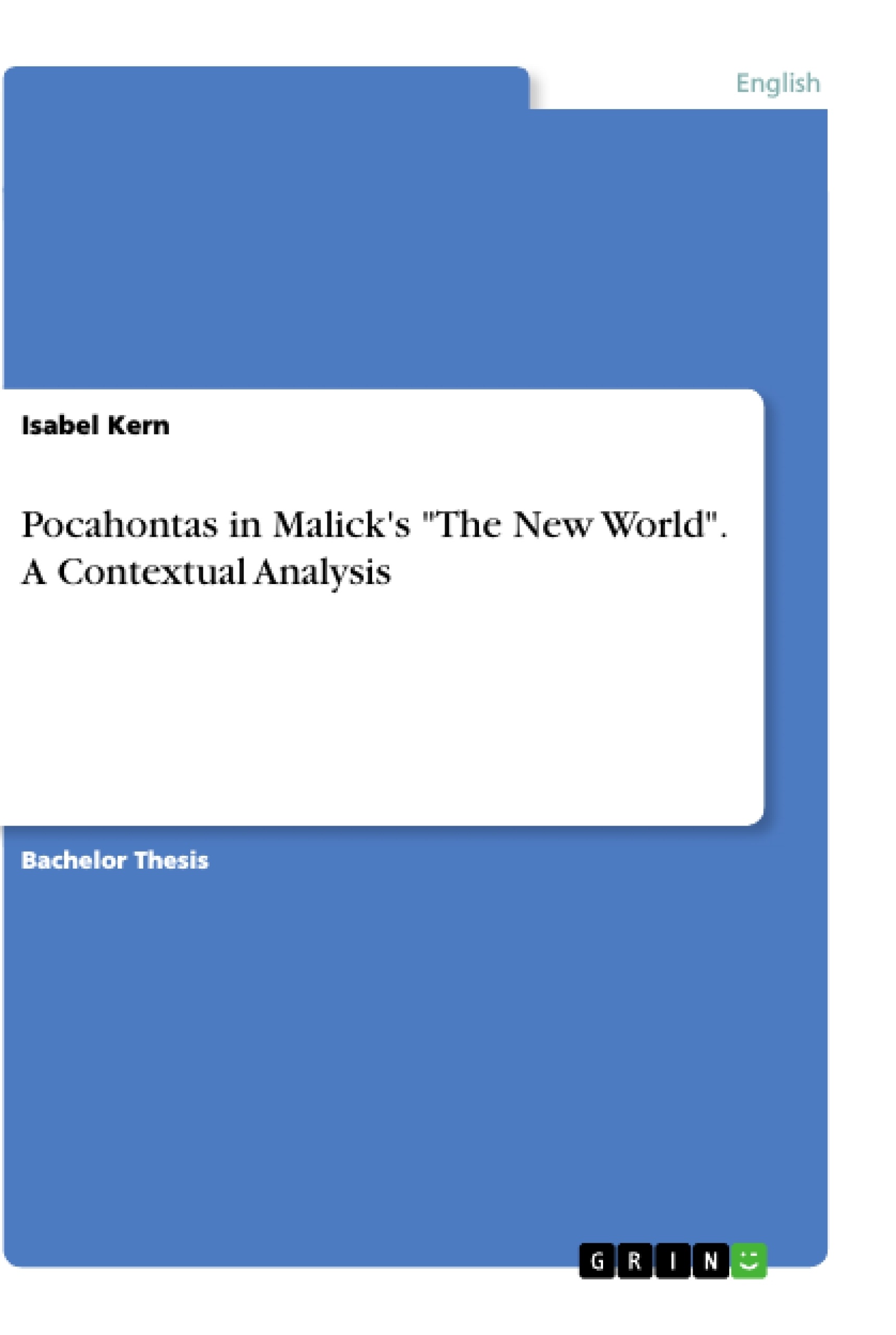The aim of this paper is to analyze Malick’s film with regard to earlier notions of assimilation and othering. By exploring how earlier notions of assimilation, othering and sentimentalism of the late 19th century are combined with a newly interpreted version of the Pocahontas myth, I will analyze the film’s cultural work in the historical context of its making.
In order to do this, I will rely on concepts linked to historical film, and on a comparative approach that takes earlier representations of Native Americans and specific notions like Social Darwinism into account. As a blind person, I am particularly suited to analyze the sound design, since this is a dimension of film that is often ignored. I will therefore pay close attention to the use of music, and to specific techniques of tone like the use of voice-overs. In order to analyze music, I will concentrate on the used instruments, and on the effect that music creates concerning the atmosphere of the film and the film’s interpretation. By considering how concepts and ideas from the 17th and 19th century survive in contemporary media, I want to analyze what happens to these notions when they are adapted to new forms of media (film), and how these old ideas are adapted to an entirely different situation of the present American society.
Table of Contents
- INTRODUCTION
- THEORY AND METHOD
- CONTEXTUAL APPROACH
- CULTURAL WORK (JANE TOMPKINS)
- HISTORICAL FILM
- ANALYTICAL CATEGORIES OF FILM ANALYSIS
- Music and Sound Techniques
- DEFINITIONS OF CENTRAL TERMS AND CONCEPTS
- Sentimentalism and the Cross-Cultural Love Plot
- The Cruel Indian and the Noble Savage
- Othering and Assimilation
- Darwinism and the Doomed Race
- REPRESENTATION OF NATIVE AMERICANS IN AMERICAN LITERATURE AND ART
- ANALYSIS AND INTERPRETATION OF THE NEW WORLD
- NATIVE AMERICANS AS NOBLE SAVAGES AND CRUEL INDIANS
- SENTIMENTALISM AND THE CROSS-CULTURAL LOVE PLOT
- OTHERING AND ASSIMILATION
- SOCIAL DARWINISM AND THE DOOMED RACE
- MUSIC AS A MEANS TO CREATE CULTURAL WORK
- CONCLUSION
- SOURCES CITED
Objectives and Key Themes
This bachelor thesis aims to analyze the film adaptation of The New World (2005) with a contextual approach. The work will focus on the representation of Native Americans in the film and how it relates to broader historical and cultural contexts. The analysis will draw upon various theoretical frameworks, including Jane Tompkins' concept of cultural work, historical film analysis, and key themes like sentimentalism, othering, assimilation, and the concept of the "doomed race" in relation to social Darwinism.
- Representation of Native Americans in film and literature
- Cultural work and its role in shaping perceptions of indigenous cultures
- Sentimentalism and cross-cultural love plots in historical narratives
- The portrayal of Native Americans as either noble savages or cruel Indians
- Social Darwinism and the concept of the "doomed race" in relation to Native American assimilation
Chapter Summaries
- Introduction: This chapter provides an overview of the historical and literary context surrounding the representation of Native Americans in American literature and film. It explores various narratives that depict the interactions between European colonists and indigenous peoples, highlighting the complexities of intercultural relations and the evolution of perspectives on Native American identity.
- Theory and Method: This chapter outlines the theoretical frameworks and methodological approach employed in the analysis. It introduces Jane Tompkins' concept of cultural work, examines the characteristics of historical films, and defines key analytical categories for film analysis, including music and sound techniques. It also provides detailed definitions of central terms and concepts like sentimentalism, othering, assimilation, and Darwinism.
- Representation of Native Americans in American Literature and Art: This chapter examines how Native Americans have been represented in American literature and art throughout history. It traces the development of key themes, stereotypes, and literary genres related to the portrayal of indigenous cultures, from early captivity narratives to the emergence of sentimental novels and later critiques of assimilation policies.
- Analysis and Interpretation of The New World: This chapter delves into a detailed analysis of the film adaptation of The New World, focusing on how it portrays Native Americans and their interactions with the arriving English settlers. It explores specific instances of sentimentalism, othering, and the use of music and sound techniques to create cultural work. The analysis examines how the film both reinforces and challenges existing stereotypes and narratives surrounding indigenous cultures.
Keywords
Key terms and concepts explored in this work include: Native American representation, cultural work, historical film, sentimentalism, cross-cultural love plot, othering, assimilation, social Darwinism, the "doomed race", music and sound techniques, and the representation of Native Americans as noble savages or cruel Indians.
- Quote paper
- Isabel Kern (Author), 2016, Pocahontas in Malick's "The New World". A Contextual Analysis, Munich, GRIN Verlag, https://www.grin.com/document/469843




